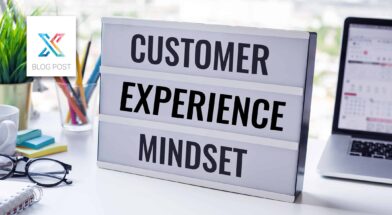A Culture-Obsessed Quantum Change or a Hologram?
Leaders of professional services firms are tasked with implementing Client Experience (CX) programs. Then again, they are often looking for the best way to implement CX without distraction from the day-to-day business operations. In some cases, CX leaders strapped with low levels of executive and employee support, feel like they have to somehow make a Client Experience transformation happen without anyone knowing there ever was a CX initiative. This is a reality of change acceptance in many organizations. This also seems impossible
There is a wide range of intentions and understanding among clients. Additionally, we often hear two ends of the spectrum at once. Leaders want to keep people focused on the core objectives of their jobs and the collective purpose of the firm. While at the same time creating what some might say is a new “CX obsessed culture.” In many cases, it can feel like an either-or scenario.
Executives that have been tasked with any size or shape of CX implementation understand that ignoring Client Experience initiatives is no longer an option. Diving in is an expensive and risky proposition. The last thing they want is a costly hologram of effort that really doesn’t stick and ends up being a waste of energy. Unfortunately, this is all too often the outcome at the end of many Client Experience efforts
We’ve found that all Client Experience transformations differ in one very fundamental way – CX practitioners shouldn’t stop at selling you a ticket and handing you a map for your journey. They should take the trip with you, guiding your organization at every step, and walking every path of resistance with you. The simple reason is that your culture is the engine of change—not the initiative, itself. Achieving a CX-obsessed culture is not the same thing as implementing a CX program. If you’ve implemented a CX initiative without doing the work of engaging your broader culture in the change, chances are you have a CX hologram—a corporate mirage that everyone can walk around and see but mysteriously vanishes when you look away.
Client Experience Transformation | Good Questions
There are so many Client Experience professionals out there who really do understand and believe in the transformative power of creating that CX-obsessed organization – they know it exists. They’ve seen evidence of how it can drive the way a company performs, and they love to talk about this promised land. Problem is, they either believe it’s too impossible to realize or they resign themselves to believe that they’ve done enough, thus choosing to leave well enough alone.
To know if you’re embarking on a real, full-scale CX transformation—or merely a CX hologram ask yourselves these simple questions:
- Is everyone from the front line to the boardroom able to explicitly state your company’s unique point of view of CX? This is your company’s ‘why’ statement behind the Client Experience transformation initiative. Example: “CX will enable us to increase customer/client intimacy. To the point that everyone we do business with will feel like they’re our only concern.
- Is everyone developing new obsessions with how to get to know the customer better by mining data differently? Or more expansively? Are they doing it in a way that helps everyone (across silos) by sharing more information about the company’s customers? Example: Have you created a CX Center of Excellence? Where customer data and insights are centralized and readily available to everyone regardless of their position or job description?
- Are leadership and teams prioritizing work on the positive impact it can have on customer relationships in a way that is evident that the company values this shift over the work of status quo? Example: Is the company publishing a live roster of CX-based projects with active prioritization in play? Is this roster being managed in a way that illustrates the company is putting its money where its mouth is by sacrificing resources in service of improving customer relationships?
- Are executives making obvious trade-offs that paint a clear and unambiguous picture that they, themselves, believe in the CX initiative and are leading by example? Example: is the CEO keeping CX on the executive agenda for all C-level teams to champion in their respective groups? Do the employees see the C-level making decisions on a regular basis that illustrate their strong and serious commitment to the initiative?
If ever there was time for those of us who work as Client Experience change agents and organizational development professionals. We must become orthodox about creating a sense of urgency it is in the way we help our clients’ organizations to absorb CX into their cultures.
Successful CX initiatives ought to be thoroughly 'outside-in' endeavors. Where organizations sponge up all the customer data and insights possible and operationalize them toward customer success—adopting CX with maximal cultural absorbency operates in the opposite direction. It’s a thoroughly inside-out operation where everyone works in support of the company’s unique point of view on CX becomes second nature.
And when the lights turn off and everyone goes home for the day, the Client Experience Transformation initiative still remains materially strong—differentiated from the competitors who work to keep their hologram animated.
Jaime Spreitzer is a Principal Consultant for CX Pilots. Jaime is a full life-cycle business transformation leadership strategist and cultural change initiative expert - from visioning sessions through the implementation and measurement of organizational strategies. Effective builder of consensus in diverse organizations through proven creative and inventive methods.





